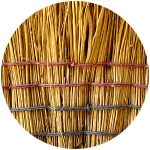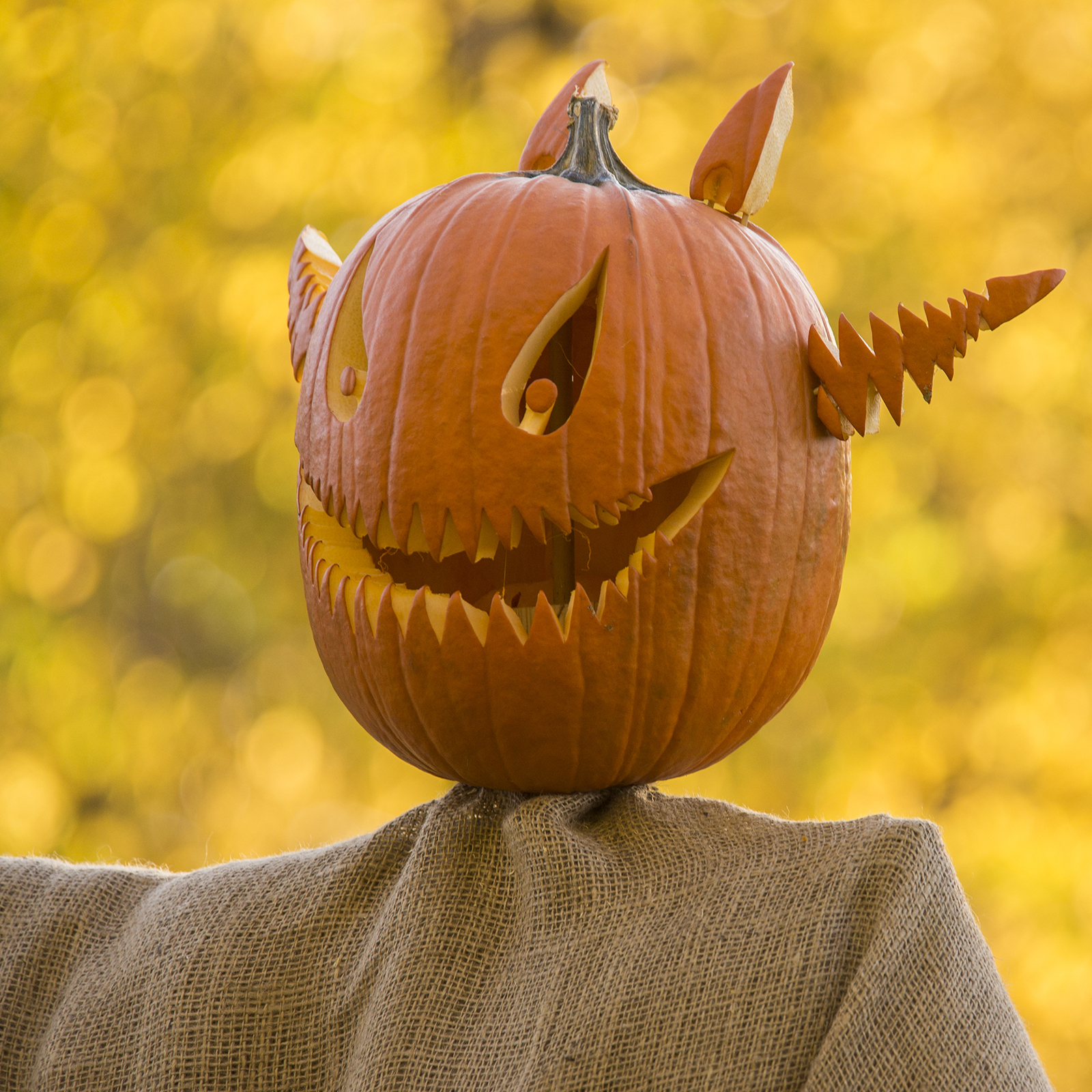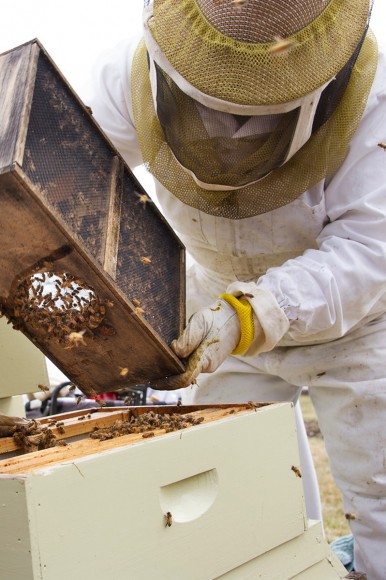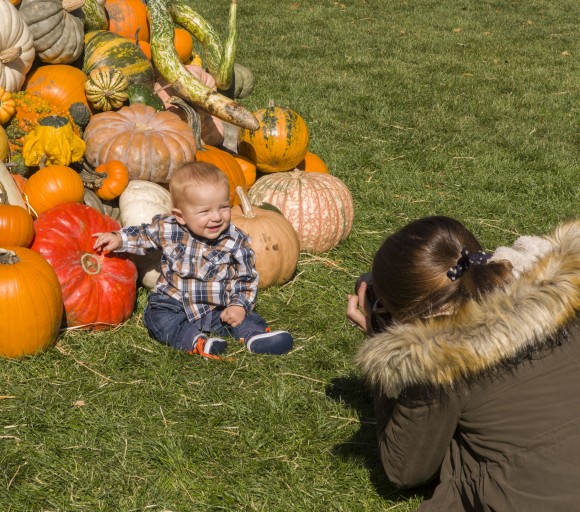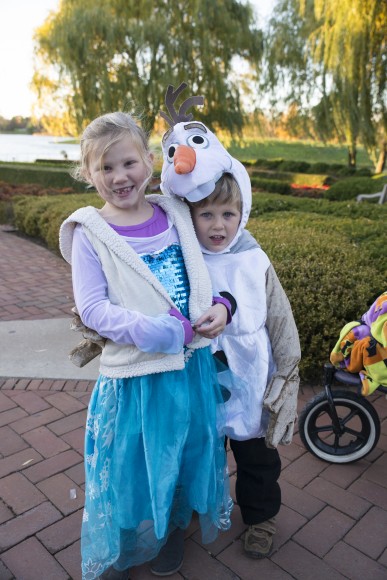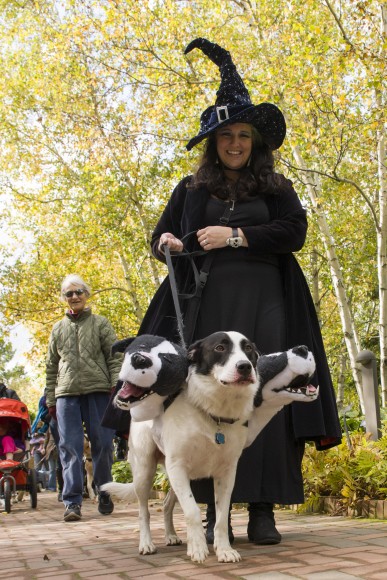Take a peek in your closet, and you might find a long wooden broom for sweeping up dust or offering rides to witches and wizards. For broom maker John Spannagel of Hidalgo, Illinois, brooms are more than just a pantry item. They’re a labor of love, made with a special ingredient: broomcorn.
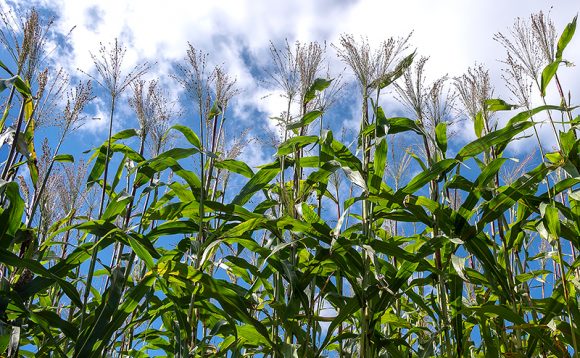
Broomcorn is a type of ornamental grass used to make specialty brooms, a passion Spannagel discovered nearly three years ago. The retired construction worker makes roughly 50 brooms a year and tours at local farm shows. As part of the Chicago Botanic Garden’s Harvest Weekend, September 29 to 30, Spannagel will bring his broom-making machines to the Garden to demonstrate broomcorn broom-making.
We caught up with Spannagel to learn a little about his craft:
What is broomcorn? (Spoiler: It’s not corn)
Broomcorn (Sorghum vulgare var. technicum) is an annual ornamental grass. It has no “ears” or “cobs,” and it can grow anywhere from 12 to 14 feet tall. Broomcorn seeds are planted in the early spring, and stalks are harvested in mid- to late August. The long woody stalks have tassels of flowers and seeds at the tips, which are removed during broom-making. You can find broomcorn growing in the Garden’s Regenstein Fruit & Vegetable Garden.
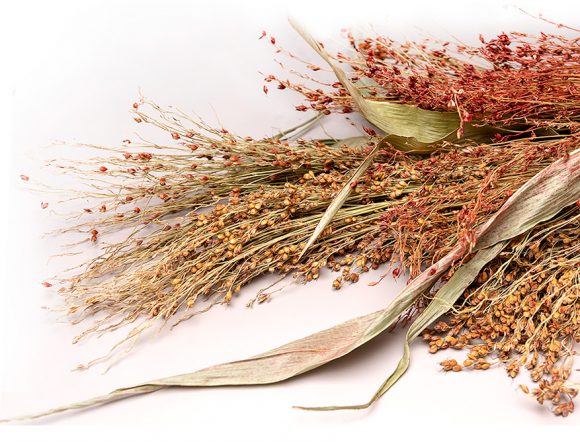 Where does broomcorn come from?
Where does broomcorn come from?
Broomcorn originated in central Africa, where it eventually spread to the Mediterranean. Benjamin Franklin is credited with first bringing broomcorn to the United States in the 1700s, says Spannagel. Commercial production of broomcorn flourished in Illinois, one of the leading producers of broomcorn in the 1860s. Nearly a century later, commercial broomcorn production slowed to a halt due to low demand and labor-intensive harvesting methods.
How do you make brooms with broomcorn?
Broomcorn broom-making is a lengthy process that starts with planting broomcorn seeds in the spring. When broomcorn is harvested, the stalks are run through a threshing machine to remove their seeds. The stalks are then laid on a broomcorn crib to dry for a few weeks. Once the stalks are dried, Spannagel uses broom-making equipment, including an antique kick-winder machine to wind straw around a broom stick; straw cutter; and broom press.
How much broomcorn is used to make a broom?
Spannagel orders his broomcorn from a supplier, and uses seven bundles of straw to make a broom. It takes about 45 minutes to make each broom. “Each of my brooms is a little different, and that’s okay,” says Spannagel.
So, what do you do with a broomcorn broom?
Most of the people who buy Spannagel’s brooms use them to sweep, but many others use them as decorations. Spannagel says as long as you take care of your broomcorn broom, it should last up to 15 years. Be sure to store them upside down or hang them so that that the bristles don’t bend. And always keep them dry; if the broom gets wet, let them air dry.
Hear more and see Spannagel’s broom-making in action at Harvest Weekend, September 29 to 30, at the Regenstein Fruit & Vegetable Garden.
©2018 Chicago Botanic Garden and my.chicagobotanic.org


